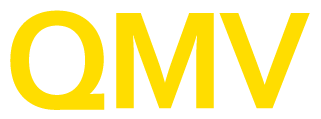Operating Model Design - Small Change For Maximum Impact
Michael Quinn, Executive Director and Co-founder
Superannuation is an established industry. With fund revenue guaranteed through the mandatory savings regime and a regulatory environment that continuously changes, it is tempting for Trustees to be comfortable if they are providing a safe pair of hands for their members.
How the Trustee operates (what they do) is defined by what needs to be done. Traditionally, the definition of what Trustees must do is shaped by regulatory requirements, being prudent with their members money and keeping their license. As operational requirements develop over a long period, services and functions can sometimes end up “Frankenstein-ish” that would never have passed a test against any design standard.
Commonly, funds establish significant strengths in particular areas of their operations, while other functions suffer from a lack of priority or skilled control.
As funds successfully scale up, higher returns are more readily achieved through greater diversity of investment opportunities and increased buying power. Providing meaningful benefits to members through better management of expenses across the Trustee supply chain appears more elusive.
Redesigning a fund’s operating model often involves introducing new systems, migrating from or switching off legacy systems, adding new resources and/or reskilling staff. Funds with established operating models view this change as an unnecessary expense. Shedding this myopic view of the way funds operate is key to achieving the best outcomes for both the Trustee and its members.
Another perspective for discovering changes for maximum impact is looking at the functions and services that the Trustee has been relying for a long time that are described as “that’s how it’s always been done”. Similarly, functions that are always done by the same person or group that are seen as black box to the rest of the organisation can often be a façade for layers of band aids and interim solutions that have somehow avoided any significant review or audit.
The ideal fund merge would be where the funds have strengths in service areas that complement other weaknesses.
High level examples are:
A fund that is realising savings through a transition to a digital operating model, compared to a fund that has just started to establish digital foundations.
A fund that has simplified or rationalised it’s product options (e.g investments and insurance), compared to a fund maintaining legacy options that are not popular within the membership. (Similar for insurance options.)
A fund that has an established Advice Service but lacks integration with its member contact centre, compared to a fund that has successfully implemented a contact centre that includes a balance of digital (readily integrated) and staff skilled in referring member’s enquiries to integrated advice channels when appropriate.
A fund that can clearly articulate its members voice, compared to a fund struggling to implement the fundamentals for supporting data analytics and business intelligence.
A fund with functioning real-time dashboards for measuring performance and quality of services key to the member experience, compared to a fund negotiating Service Level Agreements outcomes with its contracted suppliers.
When merging funds, there is an opportunity to implement several key changes to the way the Trustee operates. Ideally, changes would be identified as part of a strategy review that defines the ultimate best practice fund and includes a comparison with their current state.
Where higher returns, lower fees and optimised services are the high-level performance indicators for all funds, an honest review of the Trustees strengths and weaknesses that is aligned with the above is a good start.
Regards
Michael Quinn – Executive Director
You might also be interested in ‘SFT Due Diligence- If Approached Strategically Can Lead To A Win-Win Situation For All Involved’
If your organisation needs assistance with merger, SFT or platform transitions, QMV can help. Please contact QMV for further information on p +61 3 9620 0707.
QMV provides trusted advisory, consulting and technology to Australia’s leading superannuation, insurance, banking and wealth management organisations. For further information please telephone our office p +61 3 9620 0707 or submit an online form.
Like what you see? Please subscribe to receive original QMV content!
You may also benefit from our free monthly pensions and superannuation regulatory updates.

